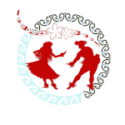Polynesian Dances: Polynesian culture boasts a rich tradition of vibrant dances, each with its own unique style, meaning, and cultural significance. Here are some of the most well-known Polynesian dances:
Hula (Hawaii): Hula is perhaps one of the most famous Polynesian dances, originating from Hawaii. It is characterized by graceful movements of the hands and hips, accompanied by chanting or singing and traditional Hawaiian music.
Tahitian Dance (Ori Tahiti): This dance form hails from French Polynesia, particularly Tahiti. It features rapid hip movements, intricate footwork, and vibrant costumes adorned with natural materials like shells and feathers.
Siva Samoa (Samoa): Siva Samoa is a traditional Samoan dance that emphasizes strong, rhythmic movements of the arms and legs. It often incorporates storytelling elements and is accompanied by percussion instruments like drums and slit gongs.
Haka (New Zealand/Maori): While not exclusive to Polynesia, the Haka is a powerful dance form synonymous with Maori culture in New Zealand. It is a ceremonial war dance characterized by rhythmic chanting, stomping, and exaggerated facial expressions.
Meke (Fiji): Meke is a traditional Fijian dance performed on special occasions like weddings, ceremonies, and festivals. It involves graceful movements, storytelling, and singing, often accompanied by indigenous Fijian instruments like the lali drum.
Aparima (French Polynesia): Aparima is a slower, more lyrical dance form from French Polynesia, often performed by women. It focuses on storytelling through hand gestures and graceful movements, usually accompanied by singing.
Poi Dance (New Zealand/Maori): Originating from the Maori culture of New Zealand, the Poi dance involves swinging tethered weights in rhythmic patterns. It can be performed individually or in groups and is often accompanied by singing or chanting.
These dances not only serve as forms of artistic expression but also play integral roles in preserving and passing down cultural heritage and traditions from one generation to the next.
How is the Hawaiian hula different from the Tahitian dance?
Hawaiian hula and Tahitian dance are both iconic Polynesian dance forms, each with its own distinct style, movements, and cultural significance. Here are some key differences between the two:
Origins and Cultural Context:
Hawaiian Hula: Hula originated in the Hawaiian Islands and holds deep cultural significance in Hawaiian society. It encompasses both ancient (hula kahiko) and modern (hula auana) styles, with movements that often depict stories, legends, and aspects of nature.
Tahitian Dance: Tahitian dance, also known as Ori Tahiti, originates from French Polynesia, particularly Tahiti. It is deeply rooted in Tahitian culture and history, with movements that celebrate themes such as love, nature, and daily life.
Movements and Techniques:
Hawaiian Hula: Hula movements are characterized by graceful, flowing motions of the hands and hips. There is an emphasis on storytelling through gestures and facial expressions. In hula kahiko, the movements tend to be slower and more deliberate, while hula auana features more fluid and modernized choreography.
Tahitian Dance: Tahitian dance is known for its fast-paced hip movements, vigorous footwork, and dynamic choreography. Dancers often perform rapid and intricate hip rotations known as “tamure” or “ote’a.” The movements are energetic and require agility and precision.
Costumes:
Hawaiian Hula: Traditional hula costumes often feature long, flowing skirts or dresses adorned with natural materials like ti leaves, shells, or flowers. Dancers may also wear lei (flower garlands) and other traditional accessories.
Tahitian Dance: Tahitian dance costumes typically include colorful, ruffled skirts made from materials like raffia or tifaifai (decorative quilting). Dancers also wear elaborate headdresses, floral adornments, and sometimes ankle or hip ornaments called “pareu.”
Music and Instruments:
Hawaiian Hula: Hula is accompanied by traditional Hawaiian music, which may include chants (oli), vocal singing (mele), and instrumentation such as the ukulele, guitar, and various percussion instruments like the ipu (gourd drum) or pahu (drum).
Tahitian Dance: Tahitian dance is often accompanied by pulsating rhythms produced by traditional Tahitian instruments such as the toere (slit drum), pahu (drum), and vivo (Tahitian ukulele). The music is lively and rhythmic, complementing the energetic movements of the dance.
While both Hawaiian hula and Tahitian dance are celebrated expressions of Polynesian culture, they each offer unique experiences that reflect the rich heritage and traditions of their respective islands.
